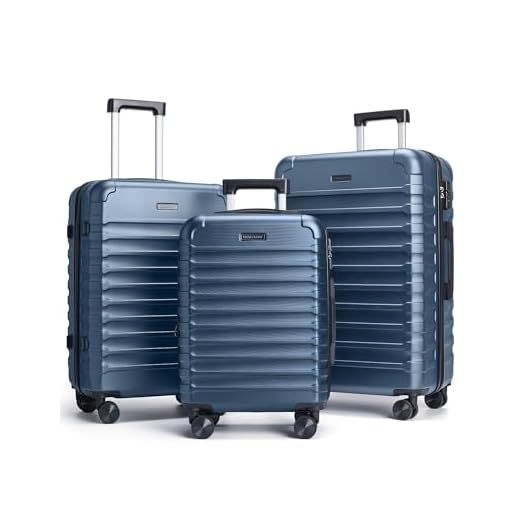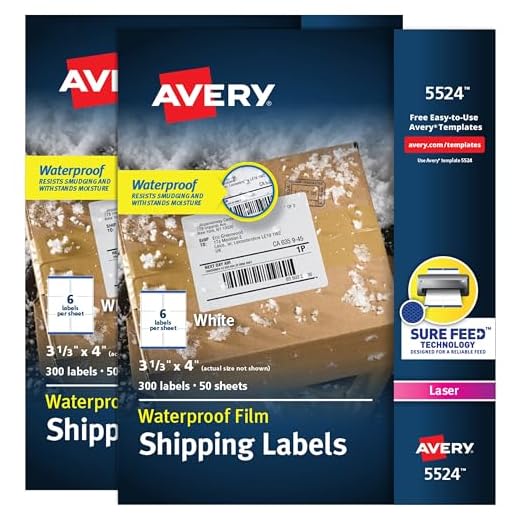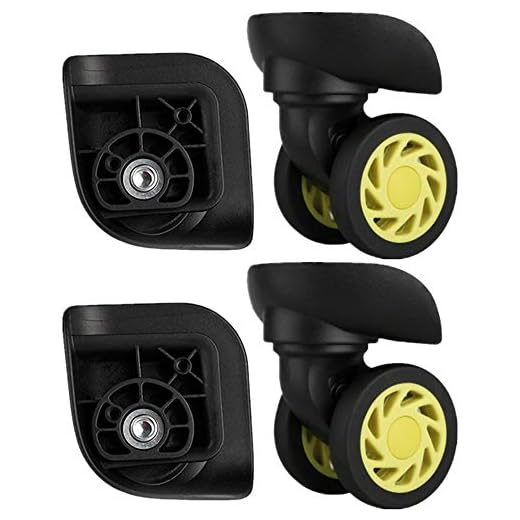



To differentiate between the locations of wheels on your travel bag, examine the design closely. Most bags are constructed with either two or four wheels and may have varying placements that influence mobility and stability.
Check for labels or tags that denote wheel directionality. Some manufacturers include indicators that help users understand how to maneuver their baggage effectively. This can often be found on the bottom or side of the case.
Another practical approach involves pushing or pulling the bag. Observe the rotation and guidance of the wheels as you move. If the bag shifts smoothly forward without resistance, the front wheels are functioning correctly. Conversely, if there is difficulty in steering, it may signal an incorrect position of the baggage.
Lastly, inspecting the arrangement will reveal if there are reinforced features or patterns present. In many cases, the orientation of the wheels is designed for optimized handling. Understanding these elements will significantly aid in the proper utilization of your suitcase.
Identifying Different Types of Luggage Casters
Inspect the structure of the casters closely. Models equipped with dual wheels typically offer improved maneuverability, whereas single-wheel designs tend to prioritize stability. This distinction can help you determine the intended usability of the travel gear.
Check for directional indicators. Many suitcases feature labels or icons near the caster mechanism that specify the operating direction. Look for arrows or markings that show the preferred movement side, which can provide insights into the intended functionality.
Examine the wheel placement and spacing. Carts with wider separation between the casters tend to handle uneven surfaces with greater ease, while those closely spaced often enhance agility, particularly in tight spaces.
Test the rotation capability. Caster models that swivel 360 degrees generally allow for greater mobility in crowded environments, whereas fixed wheels provide a straightforward approach when rolling down hallways or straight paths.
Observe the material composition of the wheels. Hard plastic versions may perform differently on various surfaces compared to rubberized options, which can grip better but may wear down more quickly over time.
Consider the surface pattern. Wheels designed for specific terrains often showcase unique treads, indicating whether the gear is suitable for smooth airport floors or rugged outdoor conditions.
Identifying Wheel Orientation in Different Luggage Types
Observe the arrangement of casters on your bag. Most models feature dual or four-wheel sets, with pairs positioned on each side. The orientation can be located by examining which wheels rotate freely and which are fixed to the frame.
Hardshell Cases: Look for directional indicators or arrows near the wheel mounts. These often suggest the intended path of movement, helping to discern orientation quickly. Securing the bag upright will reveal the manner in which each caster operates.
Soft-Sided Bags
Inspect the base of the soft-sided version for any movement indicators. Check if the wheels are designed for a forward-rolling motion versus a sideways glide. This is typically dictated by their position relative to the center of gravity. If they’re located at the corners, anticipate a more agile control.
Backpacks on Wheels
For wheeled backpacks, evaluate the deployment mechanism. Many models allow for the wheels to be stowed during backpack mode. Verify their alignment when in wheeled mode to confirm proper movement direction.
Finally, consulting the manufacturer’s specifications can provide detailed insights regarding orientation and performance. Familiarize yourself with product manuals or online resources to improve clarity on the design features specific to your travel gear.
Visual Cues for Determining Wheel Position
Examine the arrangement of attachment points on the exterior of your case to quickly distinguish the orientation of the rollers. Look for any markings or tags that may indicate which direction is strategic for movement.
Color Coding
- Some brands use color schemes on grips to signify orientation.
- Pay attention to corresponding shades on the handle or zipper to align with the wheel’s setup.
Roller Shape and Design
- Inspect the form of the rollers. An asymmetrical design often hints at specific functionality.
- Wider or differently shaped rollers usually point to a designated forward or backward position.
While seeking the right accessories, consider checking the best luggage for a river cruise to ensure a smooth travel experience.
In cases where identification becomes tricky, seek visual references or consult the manufacturer’s resources. Understanding models and experiences shared online can further guide clarity. Additionally, insights on how can a company establish market leadership for a product may offer tips for evaluating various options effectively.
Using Labeling Techniques for Easy Identification
Labeling provides a straightforward method for distinguishing between the orientation of transport cases. Consider utilizing colored stickers or tags. Assign distinct hues for each side to streamline the recognition process. For example, a blue sticker can denote one set, while a red sticker signifies the opposite side.
Incorporate numerical labels or symbols when color-coding is impractical. Create a system, such as “1” for one side and “2” for the alternate side. This approach minimizes confusion, especially when different types of transport containers are involved.
Adhesive labels are another reliable option. Write clear identifiers on durable, waterproof labels. These can be attached to handles or frames, ensuring visibility while maintaining aesthetics.
For enhanced clarity, try using arrows or direction indicators. Affixing arrows pointing in the intended direction can provide immediate context, enhancing user experience when managing multiple cases.
Consider placing labels at strategic locations. Areas near the wheels or handles are ideal since they are frequently observed when positioning the container.
| Labeling Technique | Description |
|---|---|
| Colored Stickers | Assign different colors for easy visual differentiation. |
| Numerical/Symbolic Labels | Utilize numbers or symbols for systematic identification. |
| Adhesive Labels | Attach waterproof labels with clear identifiers for durability. |
| Directional Arrows | Use arrows to indicate the proper orientation or movement. |
Implementing these labeling strategies will simplify the process of identifying and managing the orientation of travel containers, particularly when handling multiple pieces simultaneously.
Comparing Features of Left vs. Right Wheel Luggage
Differences in wheel placement significantly affect maneuverability. Models with wheels positioned on the left often provide more stability while turning left, making them preferable in tight spaces. Conversely, those with right-oriented wheels excel in rightward navigation.
Weight distribution varies based on wheel alignment. Left wheel units may reduce strain during rightward turns, while right wheel designs can enhance balance for left turns. Users should assess their dominant hand preference to enhance comfort during transportation.
Durability can fluctuate with wheel orientation. Models with wheels on the left are likely to endure wear from right-hand pushing, whereas right-placed wheels might experience strain from leftward forces. Understanding your usage scenarios can guide selection based on durability needs.
Storage capabilities can also change based on wheel position. Certain configurations allow for a more compact design, increasing internal storage space, while others focus on maximizing wheel resilience, potentially sacrificing inner volume. Evaluating specific travel situations can lead to better choices.
Lastly, repair considerations differ. Finding replacement parts compatible with left-placed wheels may require different vendors compared to those on the right. It’s prudent to verify availability of spare components before committing to a specific model.
Practical Tips for Choosing the Right Wheel Configuration
Select models with a symmetrical design for improved handling. This type typically provides balanced support and stability during movement.
Consider a rotating wheel system. Units with multi-directional capabilities enhance maneuverability, especially in tight spaces.
Assess the material quality of the rolling elements. Look for durable constructions, such as polyurethane or rubber, to ensure smooth gliding and minimize wear.
Prioritize the size of the casters. Larger wheels can handle uneven surfaces better, while smaller wheels suit well-paved paths.
Testing and Evaluation
Test mobility by rolling the item in-store. Pay attention to how the case responds during tight turns or when pushed forward.
Check responsiveness under loaded conditions. A well-designed base supports both weight distribution and ease of transport.
Maintenance Advice
Regularly inspect wheel assemblies for signs of damage or debris accumulation. Keeping them clean extends the life and functionality of the entire unit.
Lubricate moving parts periodically to ensure optimal performance and prevent sticking or jamming.
FAQ:
What are the key differences between right and left wheel luggage?
Right and left wheel luggage primarily differs in the wheel orientation. Luggage with right wheels typically has wheels that pivot clockwise while left wheel luggage has wheels that pivot counterclockwise. This can affect how the bag maneuvers, especially in tight spaces or when navigating corners. Additionally, some models may have different wheel sizes and tread patterns, impacting their performance on various surfaces.
How can I identify whether my luggage has right or left wheels?
To determine if your luggage has right or left wheels, inspect the orientation of the wheels as they face outward. Stand in front of your luggage: if the wheels on your left side rotate to the left (counterclockwise) when you push them forward, they are left wheels. Conversely, if the wheels on your right side rotate to the right (clockwise), they are right wheels. Checking the wheel alignment while pushing the bag can provide clear visibility on their direction.
Are there any advantages to choosing right or left wheel luggage?
Choosing between right or left wheel luggage often depends on personal preference and typical travel scenarios. Right wheel designs might be advantageous for right-handed users, allowing for smoother control when maneuvering. On the other hand, left wheel luggage can provide better cornering for left-handed users. Additionally, the heavy loads you carry and the surfaces you travel on may influence which type suits you better, as some wheels perform better on certain terrains.
Can I change the orientation of the wheels on my luggage?
In most cases, the orientation of wheels on luggage is fixed and cannot be altered. However, if specific wheels are removable, you may replace them with compatible wheels of a different orientation. This is not a common feature across all luggage brands or models, so it’s important to check the manufacturer’s guidelines or consult a professional if you’re considering modifications. If the wheel orientation is a significant concern for you, it may be best to invest in a new piece of luggage designed with your preferences in mind.







